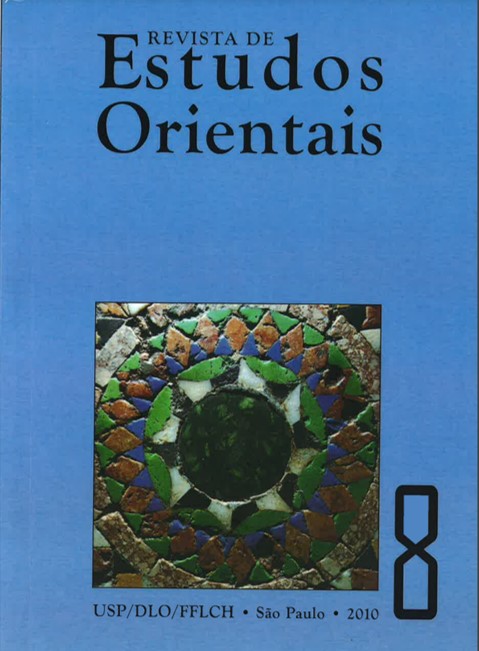O genocídio armênio e seus reflexos na literatura
DOI:
https://doi.org/10.11606/issn.2763-650X.i8p91-105Palavras-chave:
Modern armenian literature, Contemporary armenian diáspora literature, Armenian genocideResumo
The history of Armenia in the 20th century is marked by a tragedy: the genocide of approximately 1,500.000 inhabitants of Turkish Armenia by the Ottoman Empire. The goal of this paper is to analyze two main consequences of the Armenian genocide in Armenian literature, namely, the transition from modern (1850-1915) to contemporary literature (1915-), and the formation of Armenian contemporary literature in Diaspora. While Armenian modern literature is largely characterized by militant engagement, aiming to instruct the popular masses so that they could fight for political and social justice and for
independence, Armenian contemporary literature produced in Diaspora deals mainly with questions concerning cultural identity of Armenian descendants that were born in Diaspora. We exemplify these trends with excerpts from texts written by two modern authors (Raffi and Daniel Varujan) and two contemporary ones (William Saroyan and Michael J. Arlen).
Referências
ARLEN, M. J. Passagem para Ararat (trad. de Ana Teresa J. Reynaud). Rio de Janeiro: Paz e Terra, 1978.
BARDAKJIAN, K. B. A Reference Guide to Modern Armenian Literature 1500-1920. Detroit: Wayne State University Press, 2000.
GULLUDJIAN, H. "Nineteenth-Century Armenian Historical Fiction". In: HACIKYAN, A.J. (coord.). The Heritage of Armenian Literature. Volume I1: From the Eighteenth Century to Modern Times. Detroit: Wayne State University Press, 2005.
HACIKYAN, A. J. (coord). The Heritage of Armenian Literature. Volume IlI: From the Eightenth Century to Modern Times. Detroit: Wayne State University Press, 2005.
HAMALIAN, L. As others see us: The Armenian Image in Literature. New Yor: Ararat Press, 1980.
KERIMIAN, N. Massacre de armênios. São Paulo: Comunidade da Igreja Apostólica Armênia do Brasil, 1998.
KERIMIAN, S. Entrevista sobre a diáspora armênia concedida no canal 48 em 11/06/2005.
KEROUZIAN, Y. O.; DINIZ, B. As grandes datas da Literatura Armênia. São Paulo: FFLCH/USP, 1979.
MARTINS, A. H. C. "..l.Documents and Settings/ufflch/Configurações locais/usuario/Meus documentos/Clinger/Nova Revista/10_1_campolina2.pdf, Armênia, um povo em luta pela liberdade: o mais longo genocídio da história'. Etica e Filosofia,
edição especial, junho de 2007. Publicação eletrônica: .
RAFFI. Khent. (tradução de Charles Apovian). 1880/2009, publicação eletrônica: <http://www.armenia.brasil.nom.br>.
SAPSEZIAN, A. História da Armênia. Rio de Janeiro: Paze Terra, 1988.
Literatura Armênia. Rio de Janeiro: Paz e Terra, 1994.
SARAFIAN, J. Armênia atravs de sus poetas. Buenos Aires: I.G.A., 1983.
SAROYAN, W. "Seventy thousand Assyrians'. In: SAROYAN, W. The Daring Young Man on the Flying Trapeze and Other Stories. New York: New Directions Books, 1934. "70 Mil Assírios", tradução de Deize C. Pereira (inédita).
TOYNBEE, A. Atrocidades Turcas na Armênia: Denúncias de grandes personalidades. São Paulo: Paz. e Terra, 1916/2003.
Downloads
Publicado
Edição
Seção
Licença
Copyright (c) 2022 Deize Crespim Pereira

Este trabalho está licenciado sob uma licença Creative Commons Attribution-NonCommercial-ShareAlike 4.0 International License.









